United States Centennial International Exhibition: Philadelphia, May 10–November 10, 1876

CoverThe cover of this tiny souvenir book, made of tooled red leather, measures 2 1/2 by 4 inches.

Contents
The contents page of the souvenir album lists 12 exhibition buildings, Sawyer Observatory, the Total Abstinence Fountain, and a view of the grounds and buildings. The Centennial Park encompassed more than 200 buildings.

Panorama of the United States Centennial International Exhibition
The fairgrounds of Philadelphia's Fairmount Park were developed by Hermann J. Schwarzmann, who had also designed the park and the zoo. He devised a plan of five main exhibition buildings with numerous smaller pavilions interspersed in an orderly landscape. The encircling railway line, built to facilitate transportation, is an exposition design concept that has been followed ever since.

Centennial Grounds and Exhibition Buildings
This map of Fairmount Park shows the exhibition buildings and the transportation circuit. Although 450 acres of the park were available to the fair committee, only 285 were actually developed as fairgrounds, as seen here.
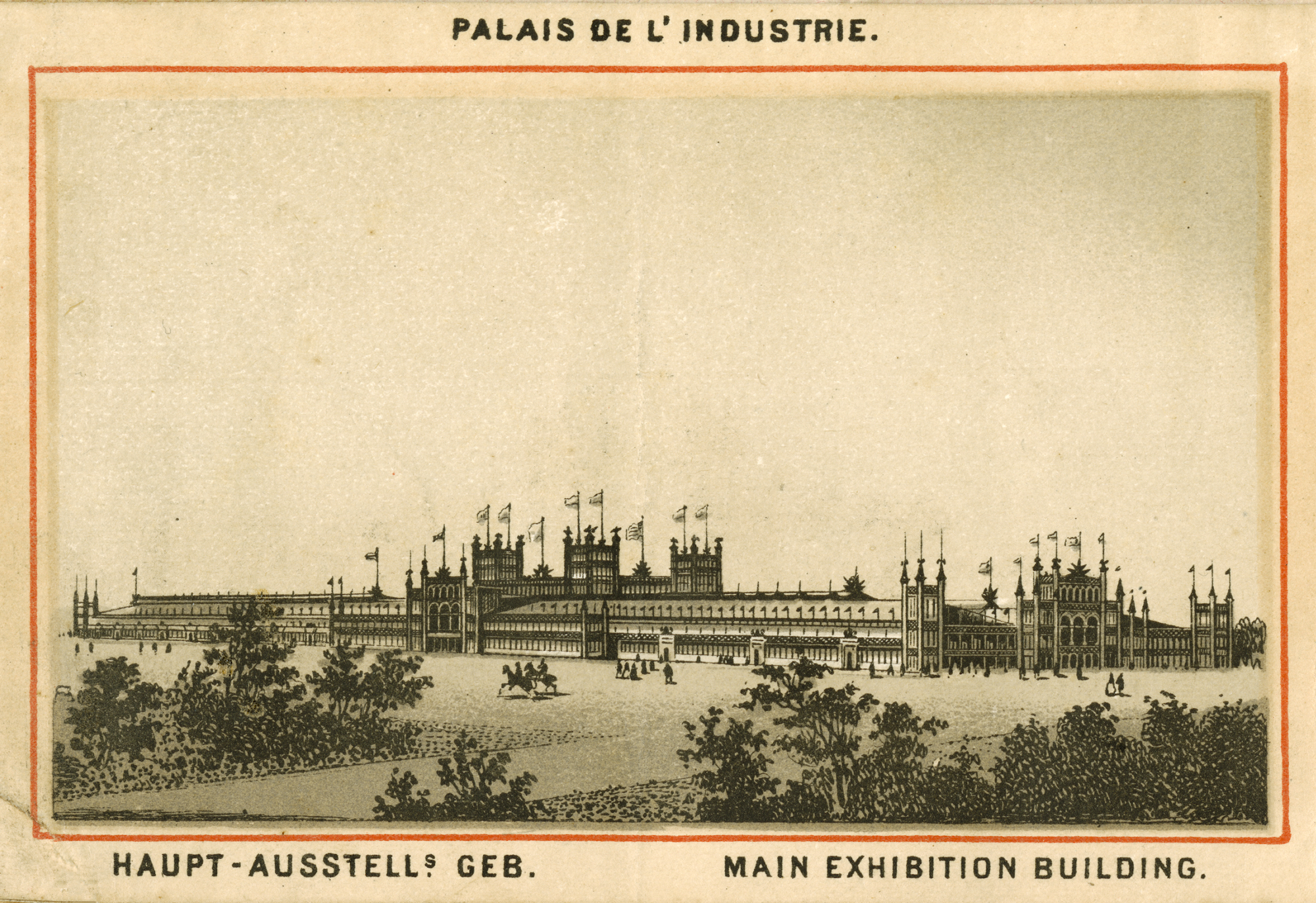
Main Exhibition Building
Henry Pettit and Joseph M. Wilson, architects
The enormous main building, made of cast iron and brick, had a display floor covering 20 acres dedicated to exhibits of both foreign and domestic manufactured goods.
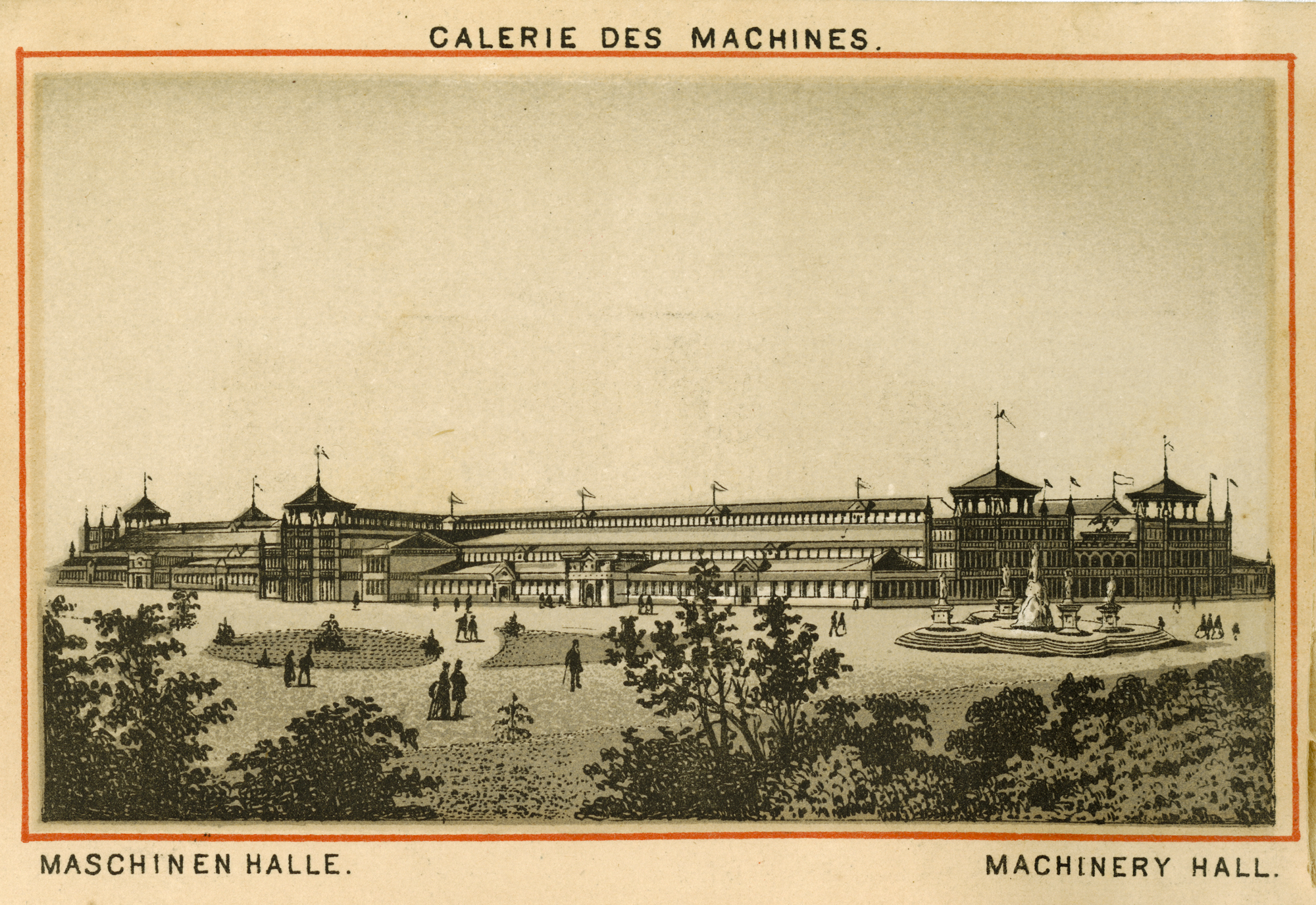
Machinery Hall
Henry Pettit and Joseph M. Wilson, architects
The 14-acre Machinery Hall displayed mechanical creations of cutting-edge technology, including the telegraph, the telephone, typewriters, magic lanterns, and steam engines.
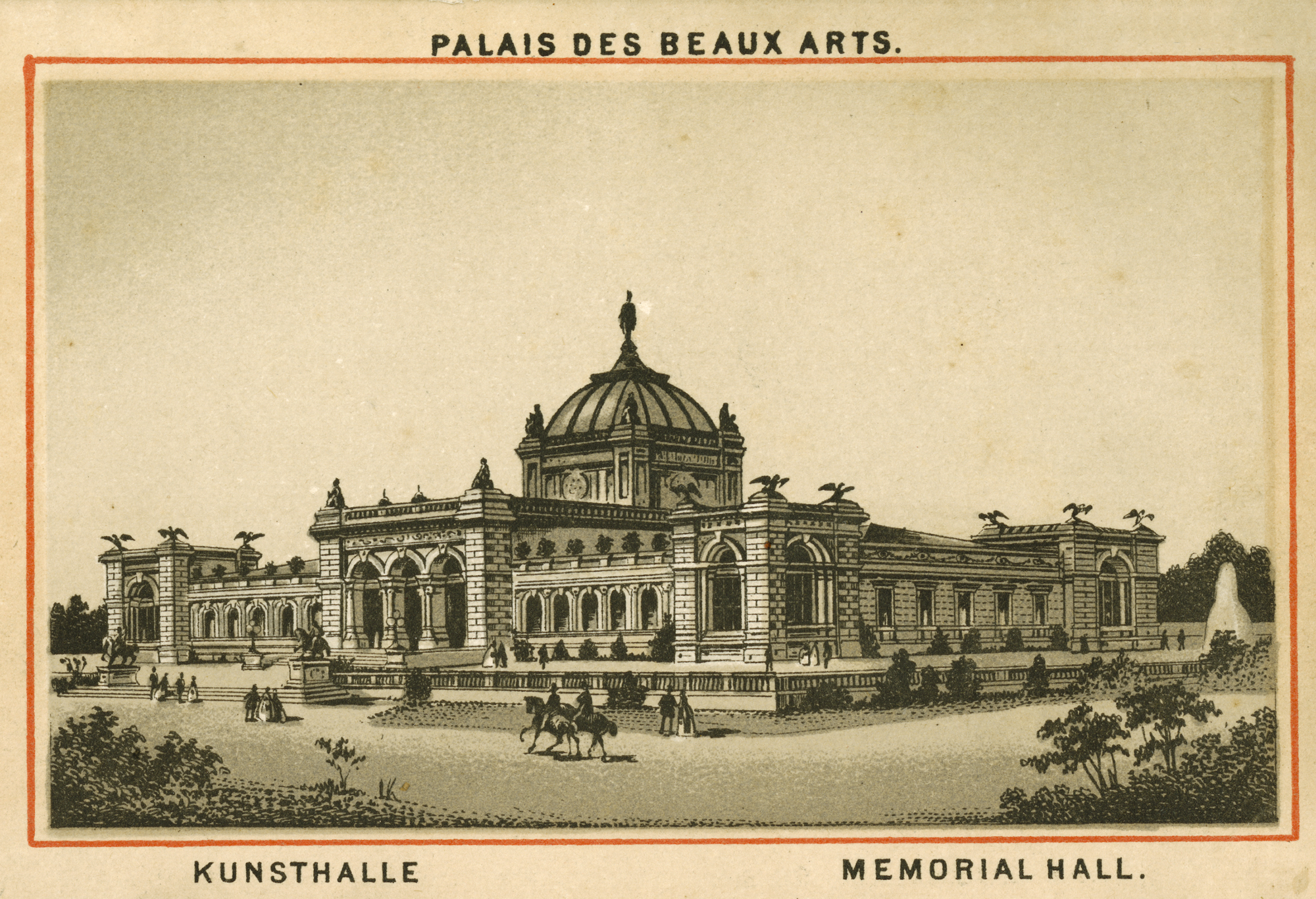
Memorial Hall
Hermann J. Schwarzmann, architect
Built of granite, with a statue of Columbia topping its central dome, Memorial Hall housed the first major international art exhibition ever held in the United States. Twenty countries sent paintings, drawings, sculpture, photographs, and examples of applied arts. The building itself became a prototype for many museums and galleries and still stands in Fairmount Park. Memorial Hall is now the headquarters of the Fairmont Park Commission, where a model of the Centennial Exposition is on display.
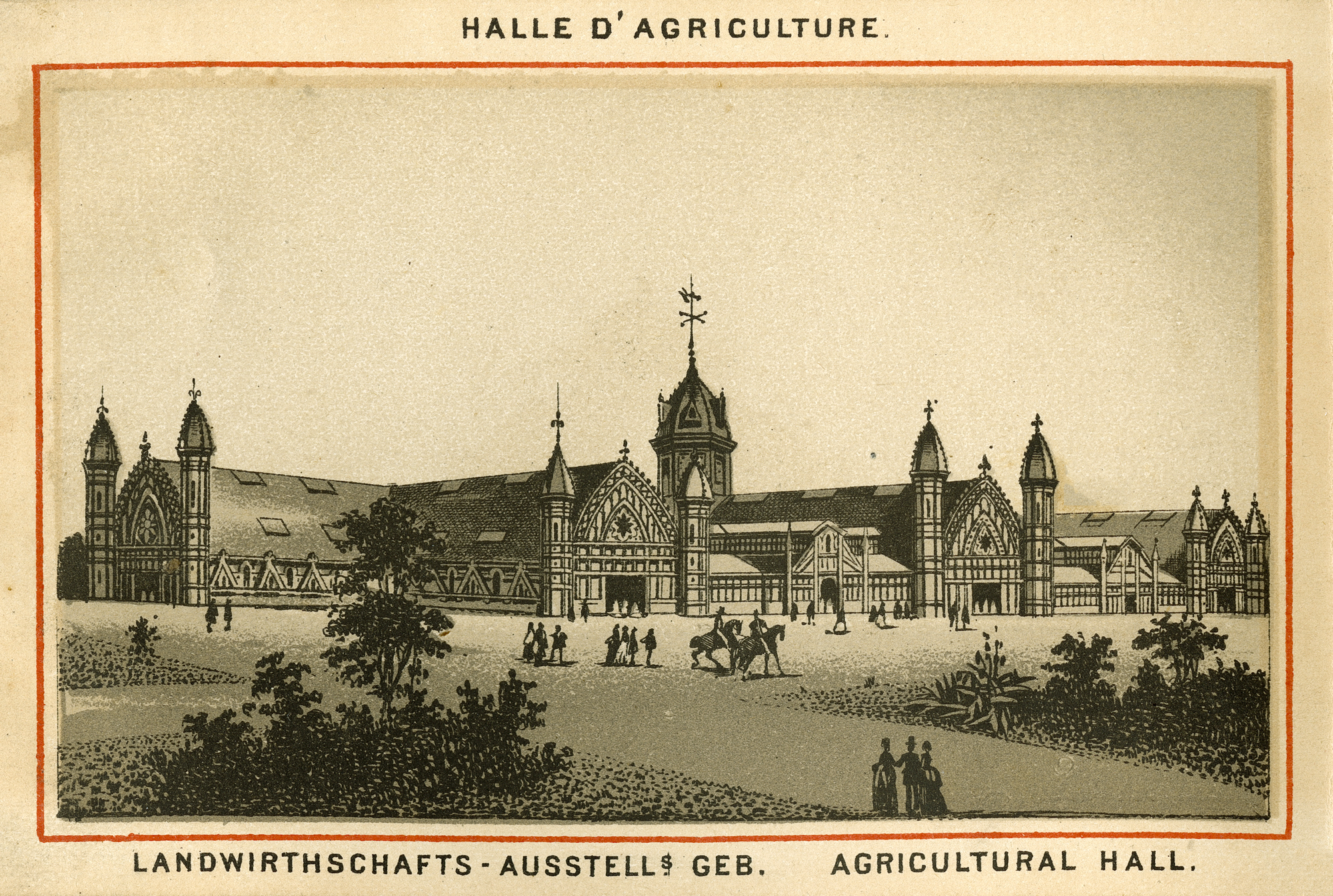
Agricultural Hall
James H. Windrim, architect
This Gothic barn housed nine acres of displays of produce, farm machinery, agricultural innovations, and, outside, livestock.
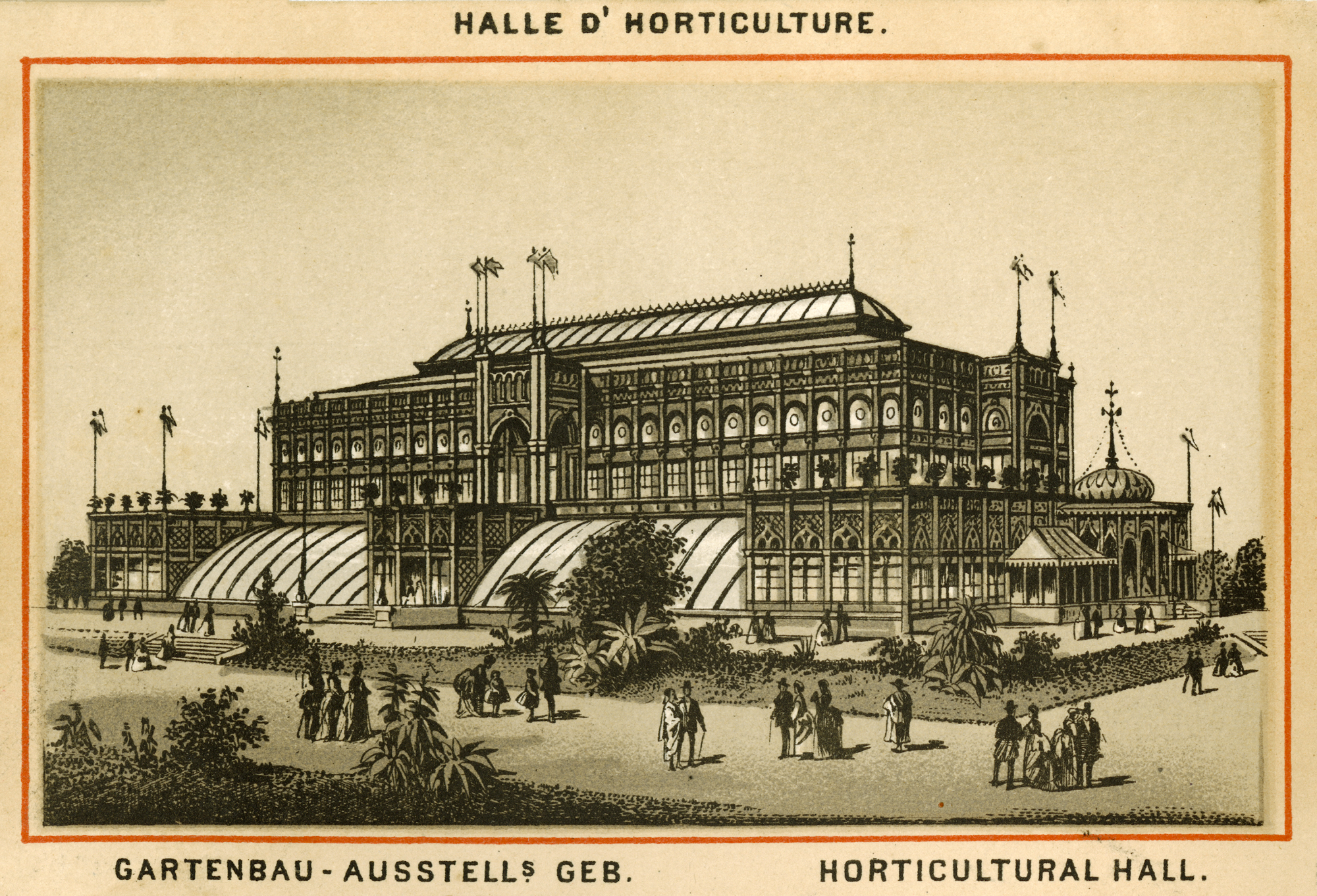
Horticultural Hall
Hermann J. Schwarzmann, architect
This Moorish glass palace displayed rare and exotic plants as well as native species. The building was intended to be permanent but was demolished in 1955.

British Buildings
Thomas Harris, architect
Nine countries constructed pavilions at the centennial, and a total of 56 countries or colonies participated. The British Buildings, constructed in a half-timbered English Renaissance style, were occupied by the British Commissioners to the fair.

Japanese Building
Matsuo-Ehe, architect
The Japanese Building was designed to illustrate Japanese exterior and interior architectural work. Japanese wares were on display and for sale.
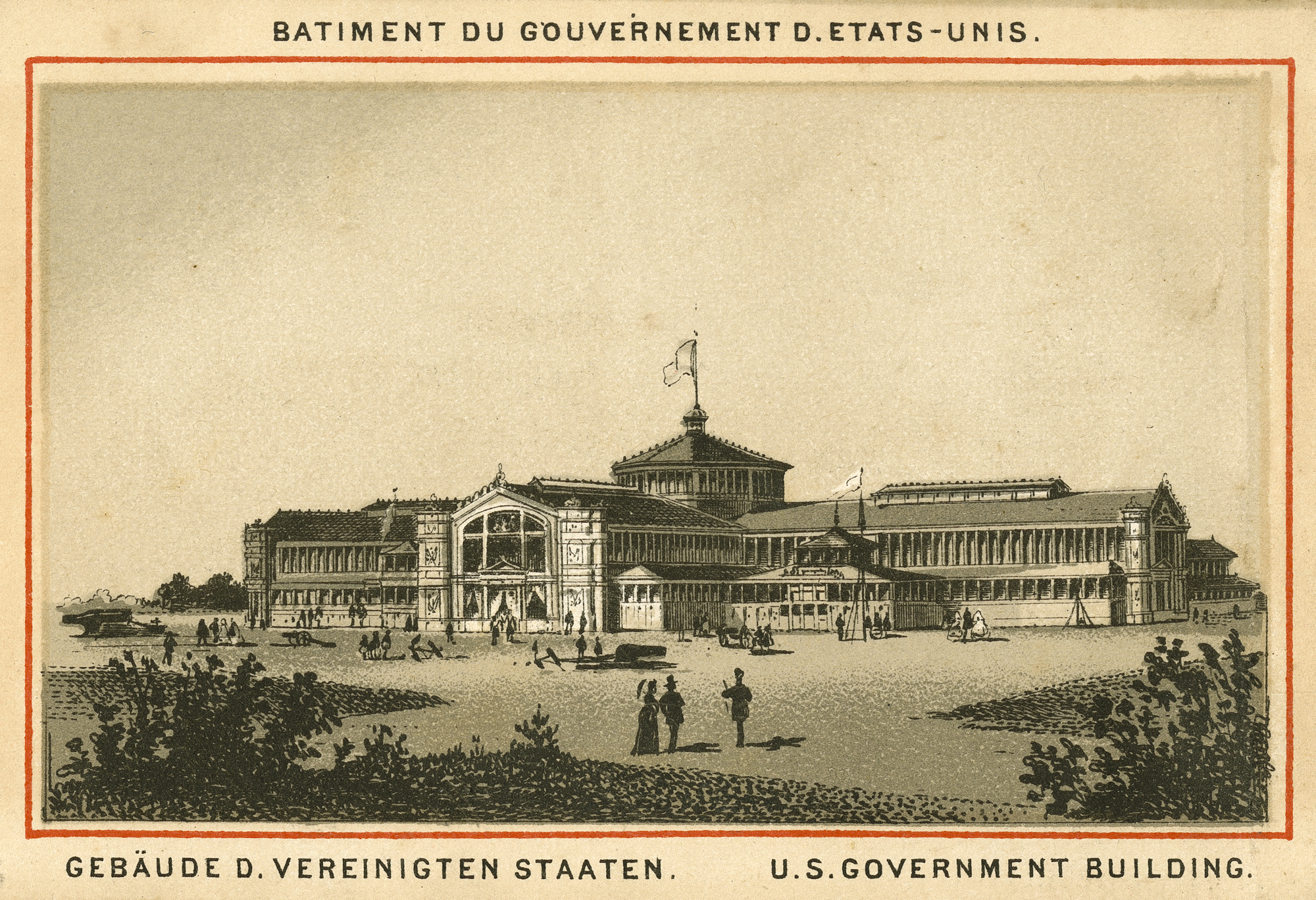
United States Government Building
James H. Windrim, architect
This structure housed objects pertaining to the history and resources of the United States. The selection and installation of these exhibits was supervised by the Smithsonian Institution. At the close of the centennial, donations from U.S. and international exhibitors were shipped to Washington, DC, to become the core of the Smithsonian’s National Museum.
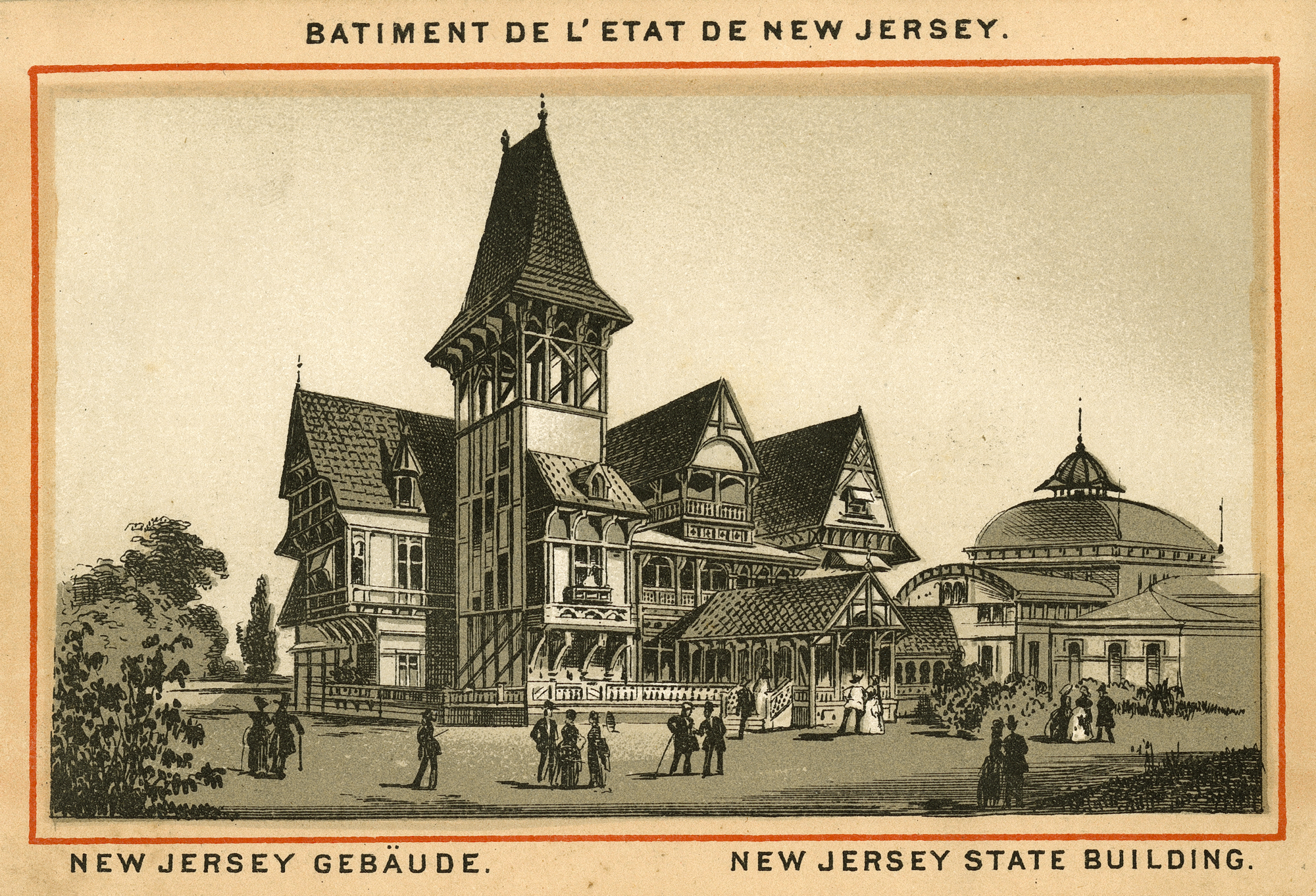
New Jersey State Building
Carl Pfeiffer, architect
The New Jersey State Building was one of 24 state pavilions. Most southern states could not afford the construction costs for pavilions, as they were still recovering from the Civil War.
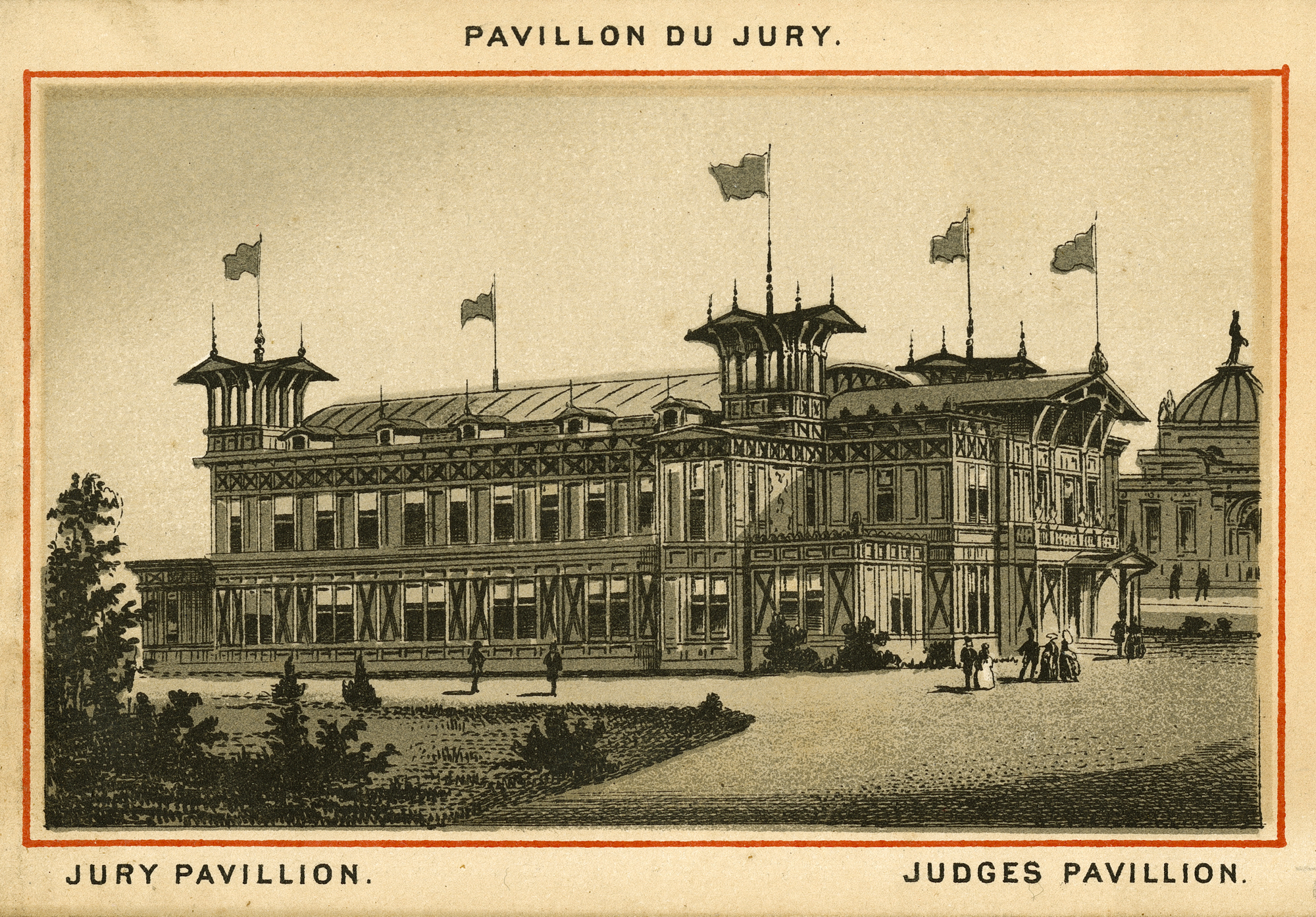
Judges Pavilion
Hermann J. Schwarzmann, architect
At this fair, unlike previous ones, all exhibitors were given bronze medals (more than 13,000 were awarded) for participation without ranking by value or importance.

Women's Pavilion
Hermann J. Schwarzmann, architect
Also called the Ladies Pavilion, the building focused on the art and industry of women and was an early statement for women's rights and the suffrage movement.

Shoe and Leather Building
Alexander B. Bary, architect
This was one of the many small pavilions highlighting particular manufacturing achievements. This building displayed "shoe and leather materials with machinery in operation, illustrating various processes of manufacture."

Sawyer Observatory
This observation tower, located on Belmont Plateau, was one of three iron towers built for the centennial and gave panoramic views of the fairgrounds and nearby Philadelphia. The observatory was dismantled in 1882. Another tower, Lemon Hill Observatory, was sold and disassembled in 1899. The third, George’s Hill Observatory, was moved to Coney Island, where it remained until it burned in 1911.
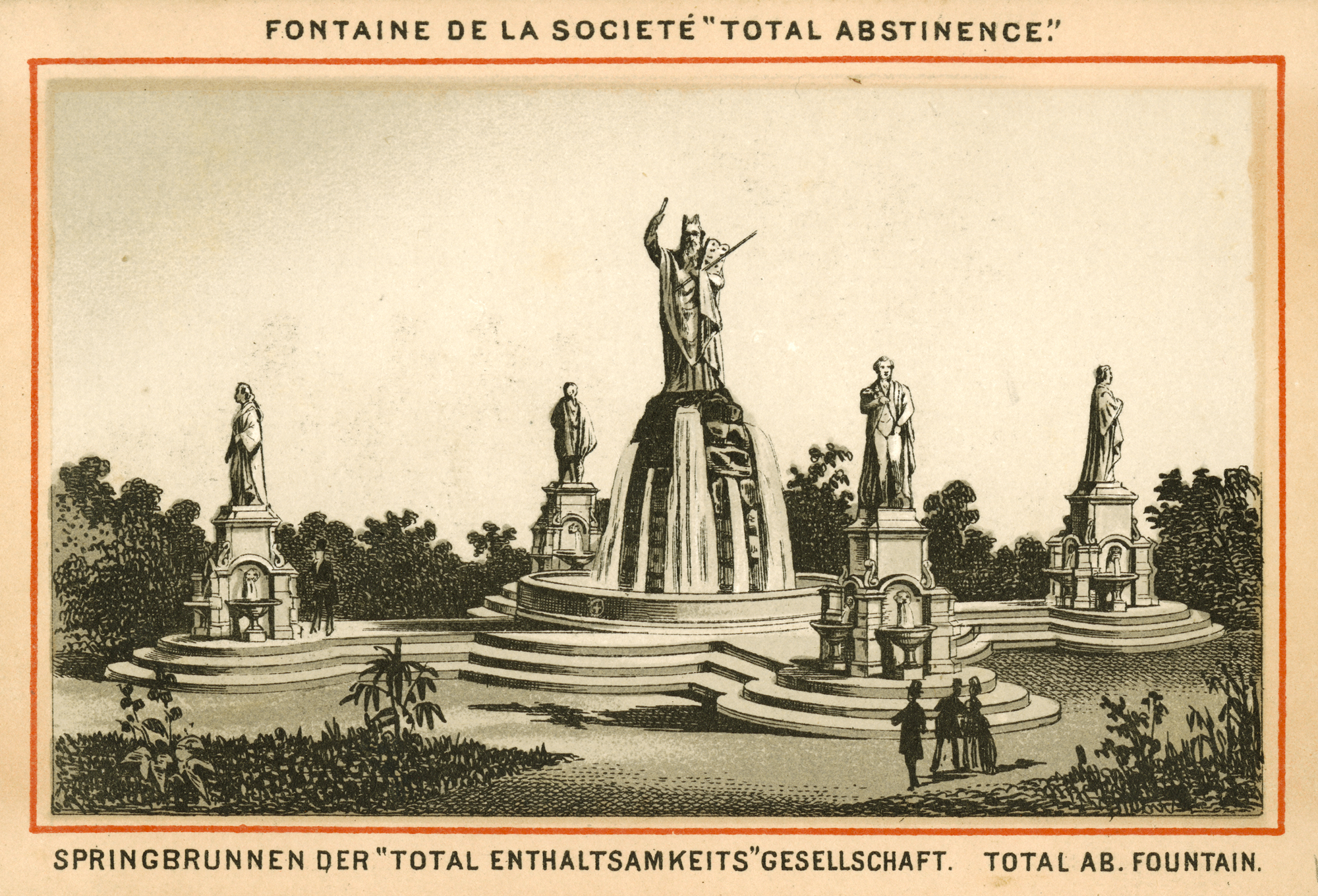
Total Abstinence Fountain
Herman Kirn, designer
This fountain was funded by the Catholic Total Abstinence Union of America. It portrays Moses (the central figure), early prominent Catholic Americans Charles Carroll of Carrollton and Archbishop John Carroll, Irish temperance proponent Father Theobold Mathew, and Commodore John Barry, "Father of the American Navy." The fountain still stands in West Fairmount Park.